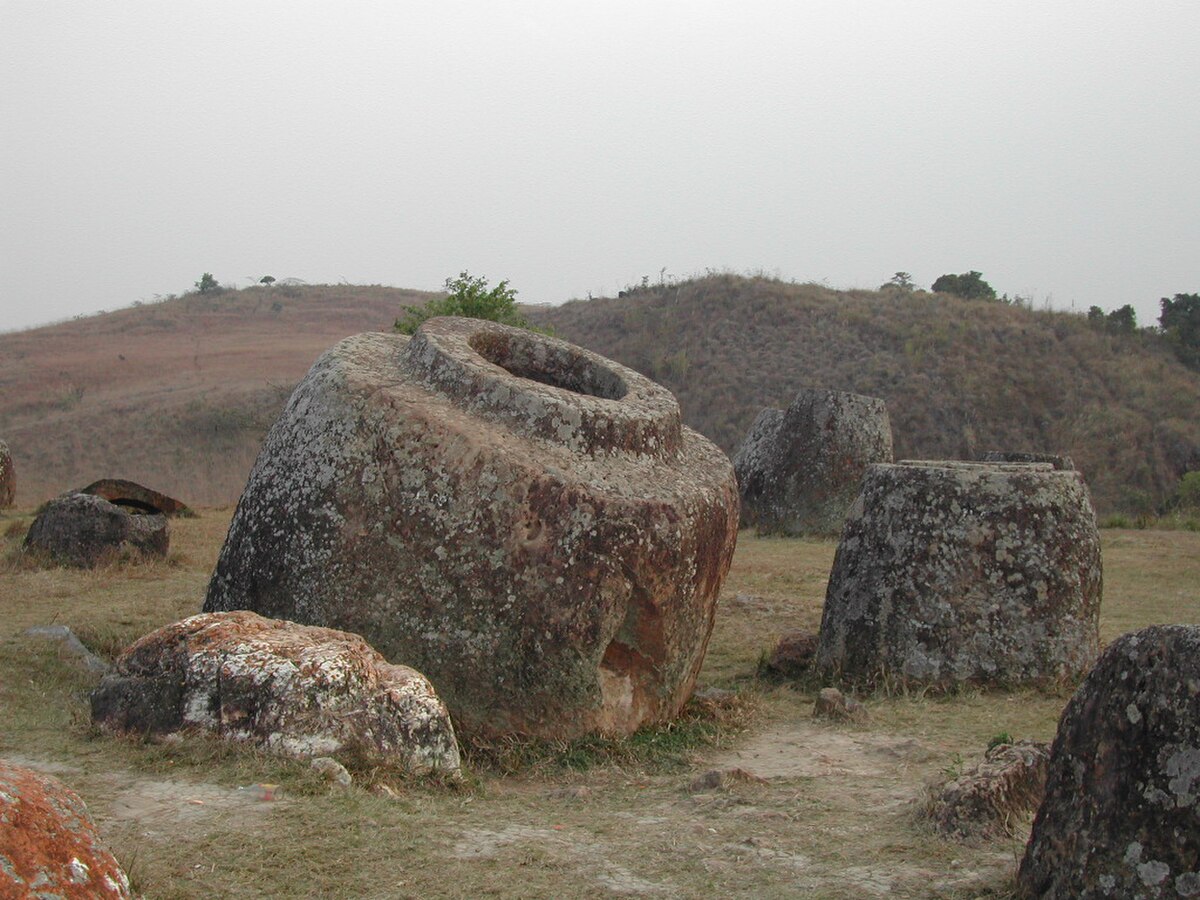
Prehistory of Laos
LaosThe earliest inhabitants of Laos – Australo-Melanesians – were followed by members of the Austro-Asiatic language family. These earliest societies contributed to the ancestral gene pool of the upland Lao ethnicities known collectively as “Lao Theung,” with the largest ethnic groups being the Khamu of northern Laos, and the Brao and Katang in the south.[1]
Wet-rice and millet farming techniques were introduced from the Yangtze River valley in southern China since around 2,000 years BCE. Hunting and gathering remained an important aspect of food provision; particularly in forested and mountainous inland areas.[2] Earliest known copper and bronze production in Southeast Asia has been confirmed at the site of Ban Chiang in modern north-east Thailand and among the Phung Nguyen culture of northern Vietnam since around 2000 BCE.[3]
From the 8th century BCE to as late as the 2nd century CE an inland trading society emerged on the Xieng Khouang Plateau, around the megalithic site called the Plain of Jars. The jars are stone sarcophagi, date from the early Iron Age (500 BCE to 800 CE) and contained evidence of human remains, burial goods and ceramics. Some sites contain more than 250 individual jars. The tallest jars are more than 3 m (9.8 ft) in height. Little is known about the culture which produced and used the jars. The jars and the existence of iron ore in the region suggest that the creators of the site engaged in profitable overland trade.[4]
